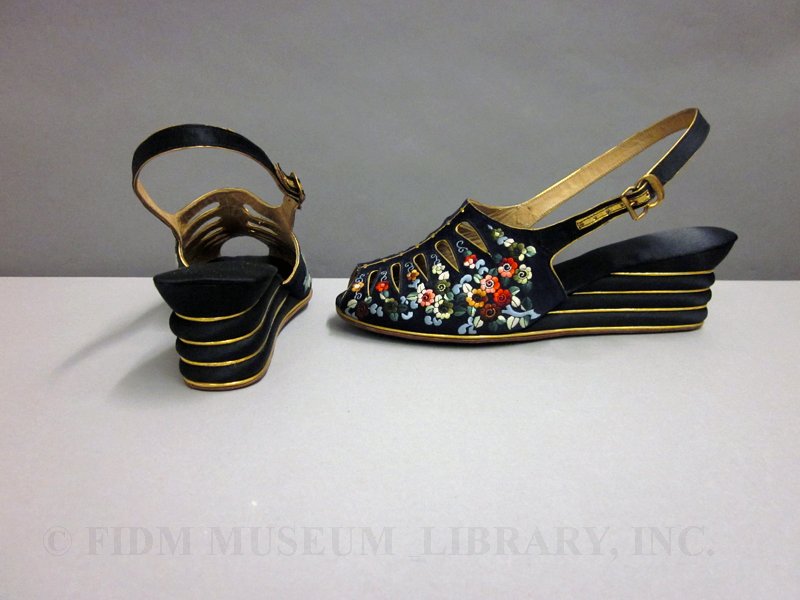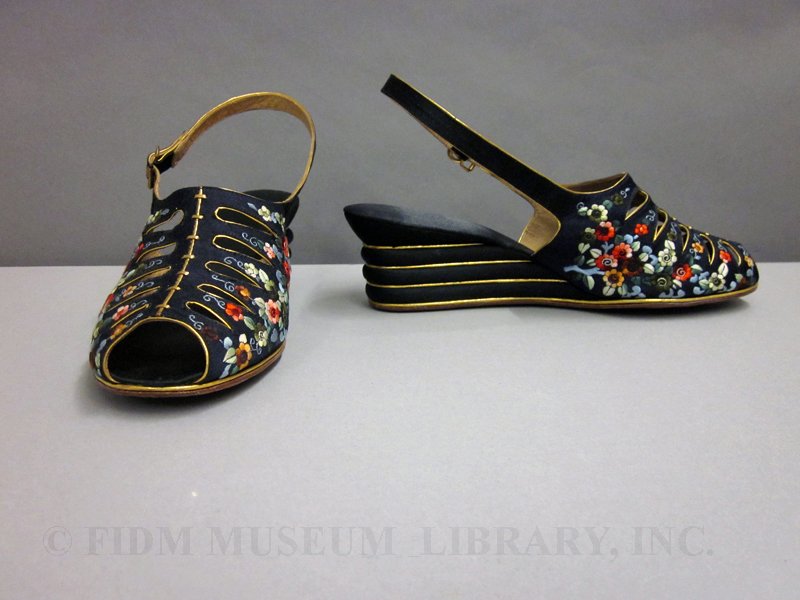The modern wedge shoe was developed by Italian shoe maker Salvatore Ferragamo (1898-1960) during the 1930s. Starting in the 1920s, Ferragamo designed stylish, trend-setting shoes for Greta Garbo, Paulette Goddard, Claudette Colbert, Clare Boothe Luce, the Duchess of Windsor and many other women. His footwear was often beautiful and unusual, but he strongly believed that good fit was the most important element of any shoe. In his quest for comfort, Ferragamo studied anatomy and constructed individual foot molds for regular customers. When making high heel shoes, Ferragamo provided firm support by embedding steel shanks in the arch. After Italy's invasion of Ethiopia (Abyssinia) in 1935, the League of Nations imposed economic sanctions on Italy, making it difficult for Ferragamo to obtain steel. This shortage forced Ferragamo to begin crafting shoes from other materials, including springy, supportive cork. This new material became the basis of Ferragamo's famous wedge or wedgie shoe.
 Wedge sandals
Wedge sandals
1938-40
Satin, leather
Gift of Anonymous Donor
2005.10.3AB
Within a few years, the wedge was a standard for many women. In May 1938, Vogue welcomed the wedge with a two-page pictorial featuring 10 pairs of wedges for every occasion, from "faded gardenia" wedge sandals for summer dressing to brown suede closed-toe wedges perfect for "city pavements or sightseeing."1 With Vogue's seal of approval, wedges could be worn in every season, for any situation. For those concerned with comfort, wedges offered a cushy footbed and the relative stability of a wide base. Because the sole could be made from cork, wood, or other materials, the wedge remained popular throughout World War II, when material shortages meant that leather and metal were largely unavailable to the civilian population.
Like glittering jewels, the late 1930s wedges pictured here were meant to enrich an evening ensemble. For evening, sling-back wedges with a peep-toe were popular. Nineteen-thirties evening shoes, wedge or not, were often covered with embellishment, from embroidery to rhinestones. In 1938, the most popular, fashionable evening footwear was "paved with glittering stones, embossed with gilt medallions, encrusted with beads, spangled with paillettes, embroidered with silver and gold.”2 These wedges feature multi-colored floral embroidery on midnight blue satin; gold leather accents add an extra touch of luxury.
1 “The Wedge Has Entered!” Vogue (May 1, 1938) 86-87.
2 “Shoe Shine” Vogue (Jul 1, 1938) 35.


